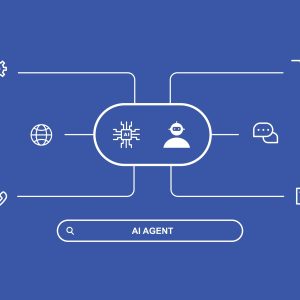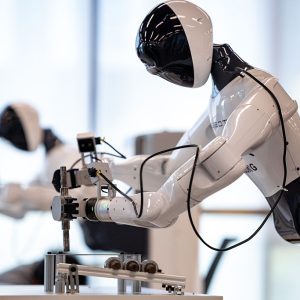
Could AI genuinely be as transformative as every tech booster would have you believe? The hyperscalers think so. That’s why they’re estimated to spend nearly $500bn on infrastructure this year. Yet behind these increasingly outlandish numbers lies an awkward truth: 70-80% of AI projects fail, according to the Project Management Institute. Should CTOs and CIOs keep their powder dry until the hyperbole has died down?
Not if they’re considering industrial AI projects. While generative AI (GenAI) tools in the ChatGPT/Gemini/Claude mould are having limited success in the office, large-scale deployments in factories, power plants, construction sites and other locations are already making an impact.
According to a Reuters/Siemens report, a fifth of global organisations have already implemented industrial AI for energy management and predictive maintenance. And over 60% have done so, or are planning to in the next three years, across even more scenarios. These include supply chain optimisation, real-time operational decision making, and production process optimisation.
Citing Microsoft figures that AI could contribute £550bn to the UK economy by 2035, techUK argues that successful deployments might even catapult the UK back to the pinnacle of global manufacturing. ERP specialist IFS is emphatic. It describes this as an “invisible revolution” powering a new wave of global growth. The firm’s own study points to growing momentum. It claims that while only a third (32%) of global businesses say they’ve deeply embedded AI into workflows and decision-making today, nearly 60% expect to do so within a year. At the same time, the share of companies “experimenting” with AI is expected to drop from 24% to just 7%.
“Industrial AI is a set of solutions and approaches relevant to companies that spend a lot of time with hard assets. You have 30% of the workforce behind a desk, while 70% are out there getting their hands dirty,” says IFS chief product officer, Christian Pederson. “That separates it from the noise you hear about AI in the press, which is focused on what can be done for that 30%.”
From innovation labs to frontline operations
At its heart, industrial AI is about automating and optimising business processes to improve decision-making, enhance efficiency and increase profitability. It requires the collection of vast volumes of data from sources like IoT sensors, cameras, and back-office systems, and the application of machine and deep learning algorithms to surface insights. In some cases, the AI powers robots to supercharge automation, and in others, it utilises edge computing for faster, localised processing. Agentic AI helps firms go even further, by working autonomously, dynamically and intelligently to achieve the goals it is set.
IFS claims that a large share of the 289 UK organisations it polled are already using automation AI (57%), predictive AI (46%) and agentic AI (37%). Pederson cites one such business – which provides “washroom, healthcare and floorcare hygiene” services – that has transformed its approach to field service using industrial AI.
The company performs more than five million service visits annually for clients, but was struggling to meet its SLAs due to persistent staff shortages, he says. By applying AI algorithms to staff schedules, client information, routing data and even electric vehicle charging telemetry, Pederson claims, it was able to drive a 40% increase in technician productivity. “You can then decide what to do with that increased productivity,” he explains. “Do you get more engagements or realise some savings? That’s obviously up to the individual company and their situation.”
Another standout case is recycling giant TOMRA. It collects large volumes of data from its recycling machines at client sites, and then applies anomaly detection algorithms to improve first-time fix rates for engineers.
“You get the data in from IoT and you trigger that as an anomaly,” says Pederson. “You analyse the anomaly against all your historic records – other incidents that have happened with customers and how they have been fixed. You relate it to your knowledge base articles. And then you relate it to your inventory on your service vans, like which service vans and which technicians are equipped to do the job..
“So it’s the whole estate of structured, unstructured and processed data. In the past, they would send a technician out, and they could get it right 84% of the time. Now they have improved their first-time fix rate to 97%.”
Both this and the aforementioned field service deployment feature an “agentic dispatcher” which autonomously creates and publishes the schedules to the relevant service technicians, updates their calendar and suggests the best route to take. “In the very near future, AI agents will not only be helping to address work for people behind a desk, but guiding robots directly,” says Pederson.
Daniel Basile, vice-president of field service at TOMRA North America, adds that the company is also using what-if scenario planning to better manage and schedule its field resources. “It essentially offers you a test environment right within production, which saves weeks, if not months, in assessing the impact of different potential changes,” he says.
Meanwhile, an AI-powered co-pilot tool has helped the firm to reduce onboarding time by up to 50%, boosting field readiness. “Embedded AI is helping TOMRA capture knowledge from more senior technicians. Instead of just ‘what does the manual say?’ we can use AI to digitise the real experience of our most tenured technicians, to help us capture and share their knowledge,” says Basile. “Rather than an employee needing 30 minutes or an hour to sift through the information of an 800-page manual, they can ask a question and in seconds the AI will return the answer, what page(s) it’s on, and links to any supporting documents.”
Other examples abound. One is Cheer Pack, which makes pouches for various food and beverage clients. It uses AI to control robots on the factory floor, freeing staff to focus on less repetitive labour and saving millions of dollars each year. Another is Schneider Electric, which is teaming up with power system specialist ETAP. The duo are using AI-powered digital twin technology to simulate how AI factories operate. By running advanced analytics against these simulations, they can run what-if scenarios, predictive maintenance and more to improve their design.

Overcoming a human-shaped challenge
The potential benefits of successful industrial AI deployments speak for themselves. Some 91% of UK organisations IFS spoke to claim the technology has helped improve their profitability, while 95% believe it will have a positive impact on the environment. But to harness its full potential, newcomers will need to overcome some potentially sticky challenges.
The first can be expressed simply: garbage in, garbage out. Data must be clean, accurate and high quality if organisations are to emulate the likes of TOMRA and Schneider Electric. It must also be protected from tampering and theft. One study claims that a quarter (26%) of UK and US businesses suffered a data poisoning attack last year.
Legacy technology and skills gaps also loom large. More than half of the global organisations IFS spoke to estimate that up to 60% of their workforce will need retraining for AI tools. A third says the figure could be 100%. Yet this is assuming they are willing participants on this journey. Cultural resistance is not to be underestimated, especially if workers fear their jobs may be at risk.
“The biggest challenge with these things is not the technology, it’s the change management,” says Pederson. “Service technicians often have a years-long relationship with their dispatchers, who know the preferences of each technician. So there are challenges when you walk into this area with AI.”
Yet humans are vital to the success of such projects – not only as end users of AI, but also as supervisors. “With the use of AI in industrial environments, particularly in safety-critical settings, ensuring human oversight is embedded in processes and procedures is vital,” explains Usman Ikhlaq, AI programme manager at techUK. He’s ultimately optimistic that organisations can overcome challenges around data quality, skills, security and leadership buy-in.
“Organisations are seeing tangible results by implementing robust cybersecurity measures, enforcing strong data governance, investing in workforce upskilling, and aligning AI initiatives with strategic business objectives,” Ikhlaq explains. “When these barriers are addressed, industrial AI not only optimises real-time operations and reduces unplanned downtime, but also empowers workers to make better decisions, accelerates knowledge transfer, and enables safer, more autonomous operations in complex industrial environments.”
How far will all this innovation take British companies? TechUK is unsurprisingly bullish, citing the government’s recently published Industrial Strategy, which claims it will “prioritise frontier technologies with the greatest growth potential”, such as AI. Yet the market moves faster than government policy. IFS’s Pederson claims the firm “can’t come up with ideas quickly enough” for its customers. Against this backdrop, tech leaders who prefer to wait and see may find they’re soon left behind.






